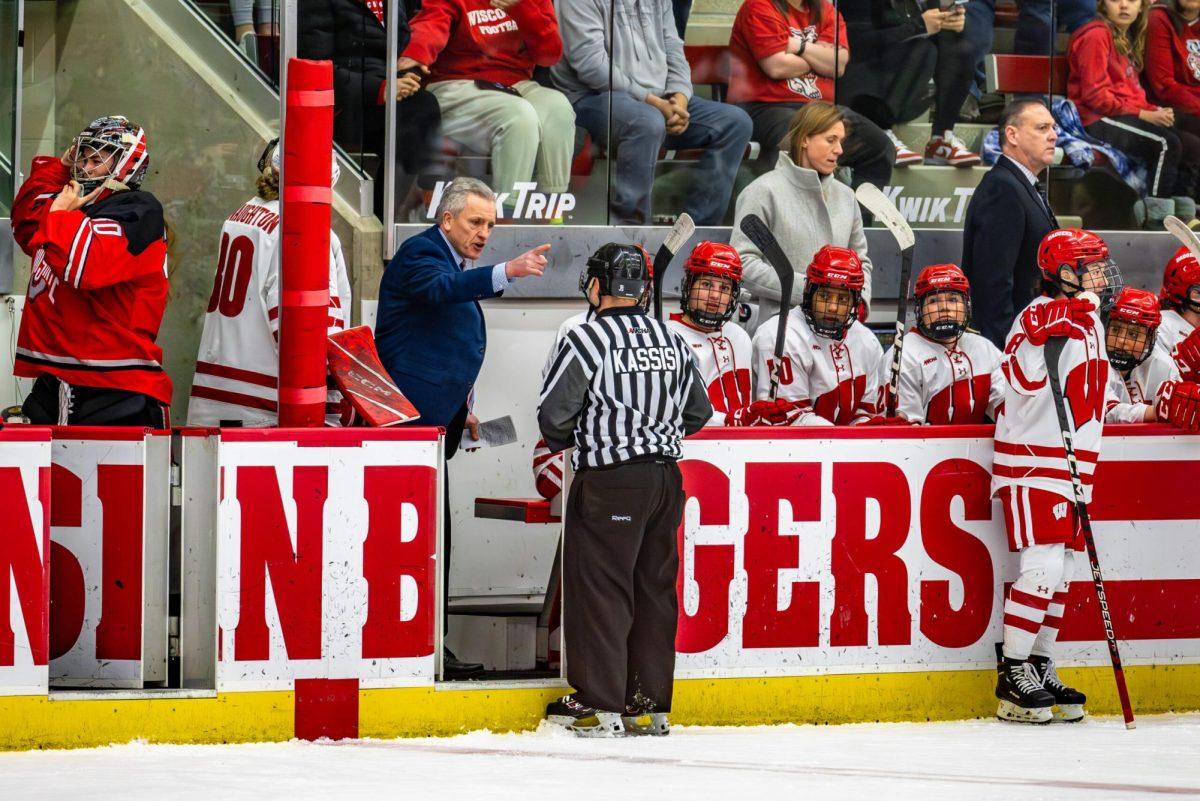To a certain degree, opponents can count on the Wisconsin men’s basketball team to defeat itself this season.
This past Saturday, Ohio State came to Madison and left it with wide smiles for the first time in 11 years.
The Badgers catapulted three-pointer after three-pointer and watched 22 of 27 bypass the net. That’s an 18.5 percent conversion rate.
Meanwhile, Wisconsin was on the money from inside the arc, converting 17 of 28 shots – a percentage of 60.7.
But up went another three.
On the other end, however, Ohio State recognized what it had on its hands: a bad day from behind the arc and a solid game going inside.
The Buckeyes made just one three-pointer on the day but only attempted seven to begin with. With OSU executing inside (hitting 21 of 44 shots, 47.7 percent), the Buckeyes ended up winning by six points, and all of Wisconsin’s fandom was left saying to itself, “It’s hard to win when you go five of 27 from three-point range.”
This isn’t the first time this season – or in seasons past – the Badgers opted to ignore shortcomings from its outside game and continue to force the issue. But in comparing the shot selection between Wisconsin and Ohio State, we see the difference between these two teams.
The Badgers played some great basketball Saturday. They kept pace with a team many consider to be the nation’s best (even though it’s ranked No. 3). The difference was Ohio State catered its offense to what was working while Wisconsin did the opposite.
Wisconsin is unwilling to change its gameplan to win. Stubbornness lost the Badgers their seventh-consecutive Big Ten victory and a share of first place for the time being.
No matter the game, opponent, situation, whatever, the Badgers continue to slam on the gas pedal when it comes to three-point shooting – and for once I would just enjoy to see them take a step back and go about things differently when the situation calls for it.
In five of Wisconsin’s six losses this year, the Badgers shot 28.6 percent or worse from three. Their best performance came against Michigan State, when they had moderate success with 35 percent.
And yet the Badgers continued to give it a go from downtown anywhere from 19 to 28 times in those games despite the fact that they were shooting better closer to the rim in five of those games (Michigan State being the exception).
The Badgers shot 60.7 percent inside the arc against Iowa but insisted on hurling 28 treys (and making three). They shot 51.2 percent inside against Michigan but opted to put 20 threes to the test anyway (making seven).
Wisconsin has lost all but one of its games by seven points or less, and they were never down by an extraordinary amount in those games. Three-pointers – to the extent that UW was using them – weren’t exactly necessary to keep pace.
A much more efficient offense would’ve been on the floor if focus had shifted to the inside once it was clear threes weren’t falling.
It almost makes me want to accuse the Badgers of being “chuckers,” – trigger-happy players who senselessly offer up shots – like Jerry once memorably accused George of being in “Seinfeld.” But, admittedly, that’s not the case.
The swing offense’s philosophy involves manufacturing the best of looks from the field, which requires patience and multi-dimensional players – bigs that can hit a three, guards that can rebound.
That’s what Wisconsin does – it creates good looks. And, really, how much can you blame a player for attempting a shot that begs to be taken?
It comes up in the post-game press conferences every time the Badgers go “thud, thud, thud” from the arc: “Were you liking the shot selection”?
And every time, whether it’s Ryan or one of the players answering, they’ll say the same thing: “Yeah, the shots were there, but we just weren’t hitting them.”
This story is just getting old. Perhaps a high-percentage, closer-to-the-rim shot is truly more valuable than an open look from 20.75 feet away.
The Badgers have the capability of playing a solid 40 minutes near the rim. Jared Berggren has got some nifty post moves up his sleeves; Jordan Taylor, when he’s determined, can attack the hoop like a bullet; Mike Bruesewitz can muscle his way down there, and Ryan Evans has a smooth mid-range jumper.
But up goes another three.
Bruesewitz at least offered a change in post-game narrative after Saturday’s loss. And, before I quote him, I want to make clear he didn’t say this with disdain in his voice; he was calm and polite about it:
“I don’t know if it was an inability, I think we just – especially early in the first half – we missed [Jared] Berggren and Ryan [Evans] and myself, other guys in the post a little bit,” Bruesewitz said after being asked if the Badgers couldn’t work the ball inside. “I think we needed to look inside a little bit, especially since our threes weren’t falling for us.”
The Badgers play a patient yet opportunistic offense. But when it’s followed so stubbornly, it leads to avoidable losses.
There’s a saying that goes: “Live or die by the three.” Don’t give me that crap. You and I and Ohio State know better.
Elliot is a senior majoring in journalism. Are you tired of Wisconsin’s three-point tendencies? Tell him about it at [email protected].



















